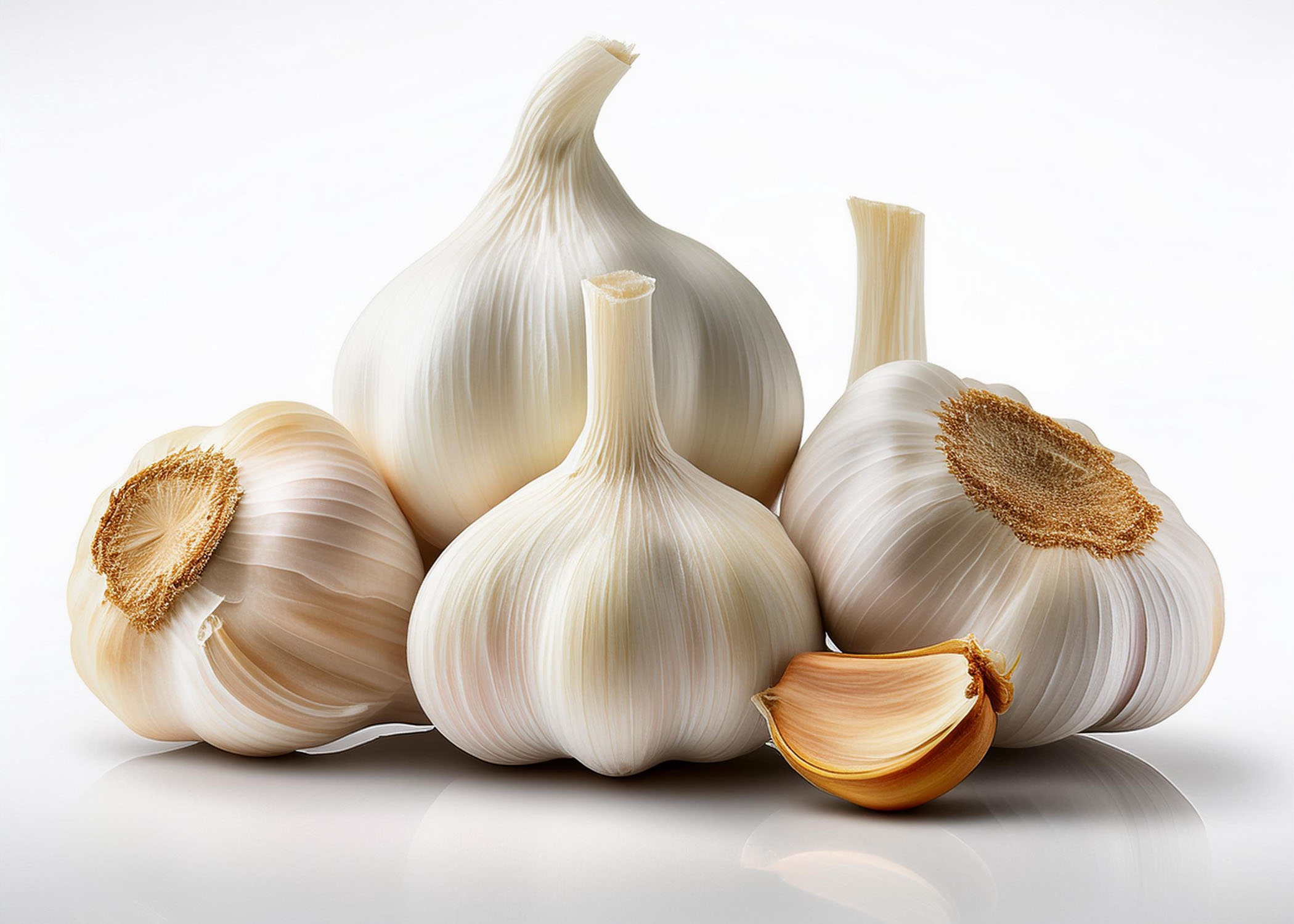Botanical Name: Allium sativum
Garlic is one of the most widely used and celebrated ingredients in the culinary world, known for its robust flavor and numerous health benefits. Its distinct aroma, pungent flavor, and versatility have made it a staple in various cuisines, from Mediterranean and Middle Eastern to Asian and Latin American.
Garlic grows as a bulb, made up of individual cloves encased in a papery skin. The bulb is typically small, but its flavor is potent. Each clove is encased in its own layer of skin, which must be removed before use. Garlic bulbs range in size, with some varieties being larger and others more compact. There are two main types of garlic: softneck and hardneck.
- Softneck garlic is the most common variety found in grocery stores. It has a milder flavor and a longer shelf life. Its flexible stems make it easier to braid, which is why it is often used in decorative garlic braids.
- Hardneck garlic is less common but has a stronger, more complex flavor. It has a central stalk and fewer cloves than softneck varieties. Hardneck garlic is often preferred by chefs for its robust taste and is also prized for its ability to produce garlic scapes, the tender green shoots that grow from the plant and can be used in cooking.
Garlic’s flavor is distinctive, with a pungent, spicy, and savory character when raw, but it mellows and becomes sweeter as it cooks. When minced or chopped, garlic releases sulfur compounds, contributing to its aroma and taste. Cooking garlic at low heat brings out its natural sweetness, while roasting or frying intensifies its nutty, caramelized flavor. The flavor of garlic can vary depending on how it’s prepared—sliced garlic offers a milder taste, while minced or crushed garlic provides a more potent punch.
Garlic’s versatility means it can be used in everything from raw applications, like dressings and salsas, to slow-cooked stews and roasted meats. Its ability to enhance simple and complex dishes has made it a culinary cornerstone.
Garlic is used in countless ways across cuisines around the world. It can be sautéed, roasted, minced, mashed, or eaten raw, and it’s a key ingredient in sauces, soups, marinades, and seasoning blends. Garlic is known for its ability to elevate the flavor of savory dishes, adding depth, complexity, and a subtle spiciness.
In Italian cuisine, garlic is a cornerstone ingredient, often sautéed in olive oil to create the base for pasta sauces, such as marinara or aglio e olio. It is also a key component in pesto, a flavorful blend of basil, garlic, olive oil, and Parmesan cheese. Roasted garlic is frequently used as a spread or mashed into creamy sauces, offering a rich and sweet alternative to its raw form.
In Asian cuisine, garlic is widely used in stir-fries, curries, soups, and sauces. It’s often combined with ginger and scallions to create the aromatic base for many Chinese and Korean dishes, while in Indian cuisine, garlic is a vital component of spice blends and curry pastes. In Thai cooking, garlic is used in everything from marinades to Pad Thai and green curry, adding a bold flavor that complements the heat from chiles and the tang of lime.
In Middle Eastern and Mediterranean cuisines, garlic is integral to dishes like hummus, baba ganoush, and tzatziki, where it’s combined with ingredients like chickpeas, eggplant, and yogurt. Garlic is also a key flavoring in grilled meats, kebabs, and roasted vegetables.

